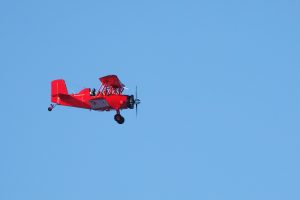The Charity
Aviation
Maritime
GA1310

Initial Report
I am a pilot of around 20 years’ experience, with the last 10 years flying out of [Airfield 1]. So, I feel as though I ought to know the Manchester low-level route pretty well. However, a recent incident has led me to reflect on that belief. I was out for a bimble with a friend, also a pilot, just to keep us both current and take advantage of a break in a run of poor weather. We had decided on a three-stage hop, out of [Airfield 1], via the low-level route, to [Airfield 2]. Land there for a quick stop for a bacon butty then over to [Airfield 3], change pilots and back to [Airfield 1] via the low-level. All very standard stuff, and a chance for a chat and catch up for us both. The flights out to [Airfield 2] and on to [Airfield 3] were uneventful and I took the controls for the flight back to [Airfield 1]. Clearing [Airfield 3], I got a Basic Service from [ATCU] Information and, as I approached the low-level, I was cleared to listen to Manchester Approach. I squawked 7366, had a quick check of the Manchester ATIS and descended to 1100 ft for the transit, giving me a 200ft clearance below the 1300 foot ceiling of the low-level route.
Around three-quarters of the way along the route I was called by a Manchester controller to ask what height I was registering, I told him 1100ft, at which point he told me I was showing 1400ft on their systems. Not questioning, I informed him I was descending and dropped a further 200 feet. I heard no more and landed back at [Airfield 1] with no further incident. On landing I realised that I had misheard the QNH setting on the Manchester ATIS before entering the low-level route thus leading to my altimeter giving me a wrong reading. Clearly a lesson learned ALWAYS DOUBLE-CHECK the Manchester QNH before entering the low-level route from whichever direction and I’m grateful to the Manchester controller for his gentle corrective action.
However, another thought does also occur. I always seek some form of service when entering new airspace and, whenever I do, the control data for that airspace is subject to a read-back. Thus, whenever I mishear an element – be it squawk or pressure setting – I am corrected and asked to repeat the correct data. Manchester low-level route is Class D airspace and the QNH is a critical element in remaining clear of the ceiling, but if I mishear the ATIS then there is no failsafe of a re-back. I suppose I could have asked [ATCU] for the Manchester QNH before leaving them, but one purpose of a listening squawk is to reduce demand on controllers and I would simply be shifting the burden from Manchester to [ATCU]. I have no solution to the issue, other than continued personal vigilance, but it remains a concern that in an environment where we look for double-checked read-back as a safety norm there is no such facility when entering the Manchester low-level route.
Lessons learnt: When preparing a flight the majority of variables can be pre-planned for at the pre-flight stage, but en-route QNH is not one of them. As a personal mantra I will, henceforth, always double-check any data that I derive from an automatic source such as an ATIS to satisfy myself that I have heard it correctly.
CHIRP Comment
The reporter raises a really good point about readbacks and the potential for mis-hearing critical information from ATIS sources. Although ATIS provides a source of such information, many ATIS transmissions are very long and so it’s sometimes not practical to listen to them twice to confirm information such as QNH – the aircraft may travel many miles during the transmission of ATIS messages and pilots should not be tempted to sit on ATIS frequencies for any longer than is necessary. With regard to QNH specifically, it’s important that pilots have an idea about what the expected QNH should be in the areas in which they are flying, and this should be a part of pre-flight planning. As a guide, depending on how far you’ve travelled, anything that is materially different to your departure airfield’s QNH should be checked, and this might highlight any gross errors that might be encountered if you mishear a figure on ATIS – listening out for other pilots’ transmissions may also give a chance to increase situational awareness in this respect. Also, remember that many of the available electronic planning and navigation apps/aids have features where live updates of meteorological data are available for every airfield on the route, and this also includes QNH so, in addition to having a tool to tell you where you are and warn of NOTAMs etc, they also provide a source of information for a whole host of other useful purposes – take some time now to have a play with your preferred version and explore what it can offer! Finally, this report is a really good advertisement for Listening Squawks because the Manchester controller was able to establish contact with the pilot having noted that the altitude readout on the displayed squawk was incorrect.